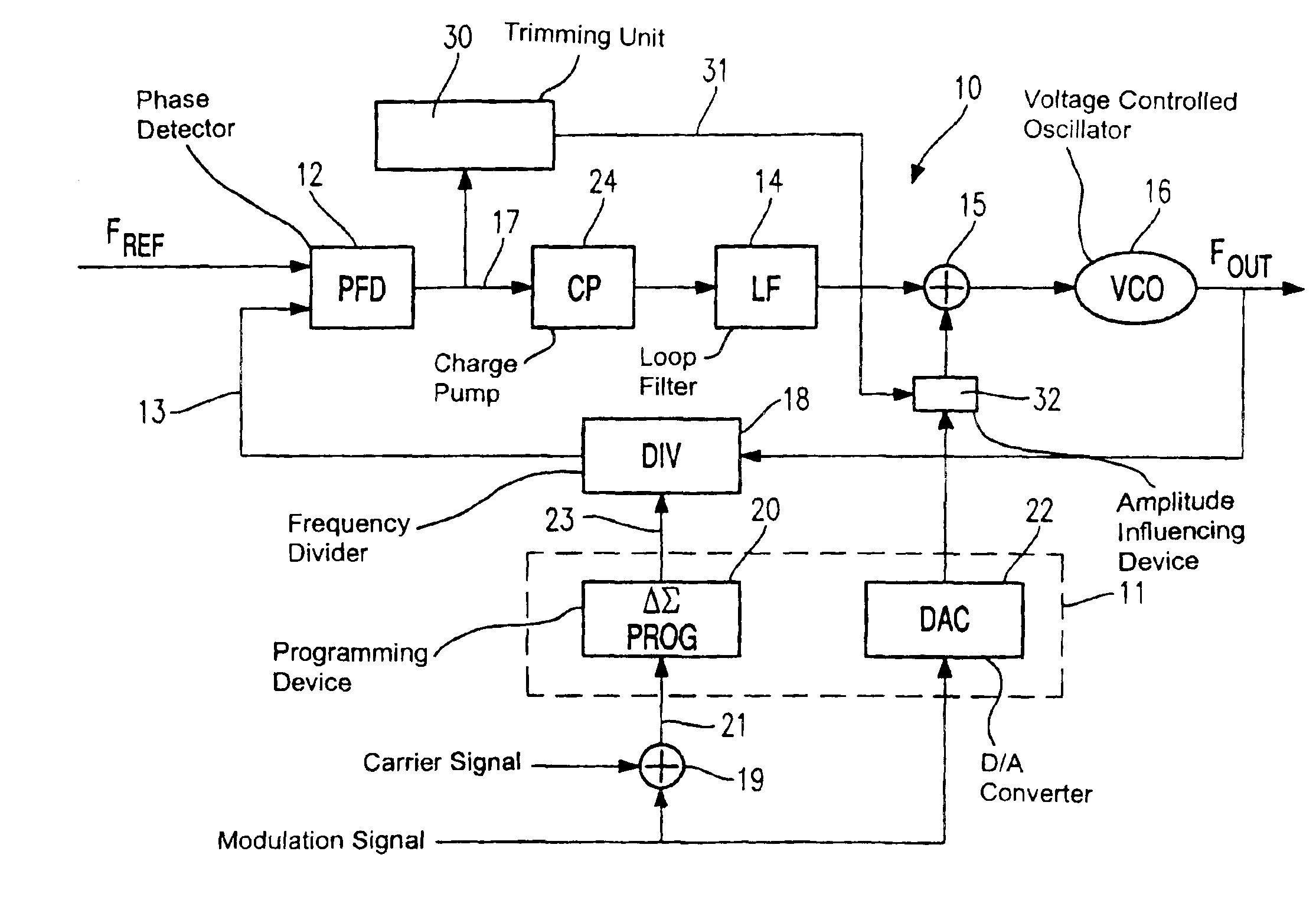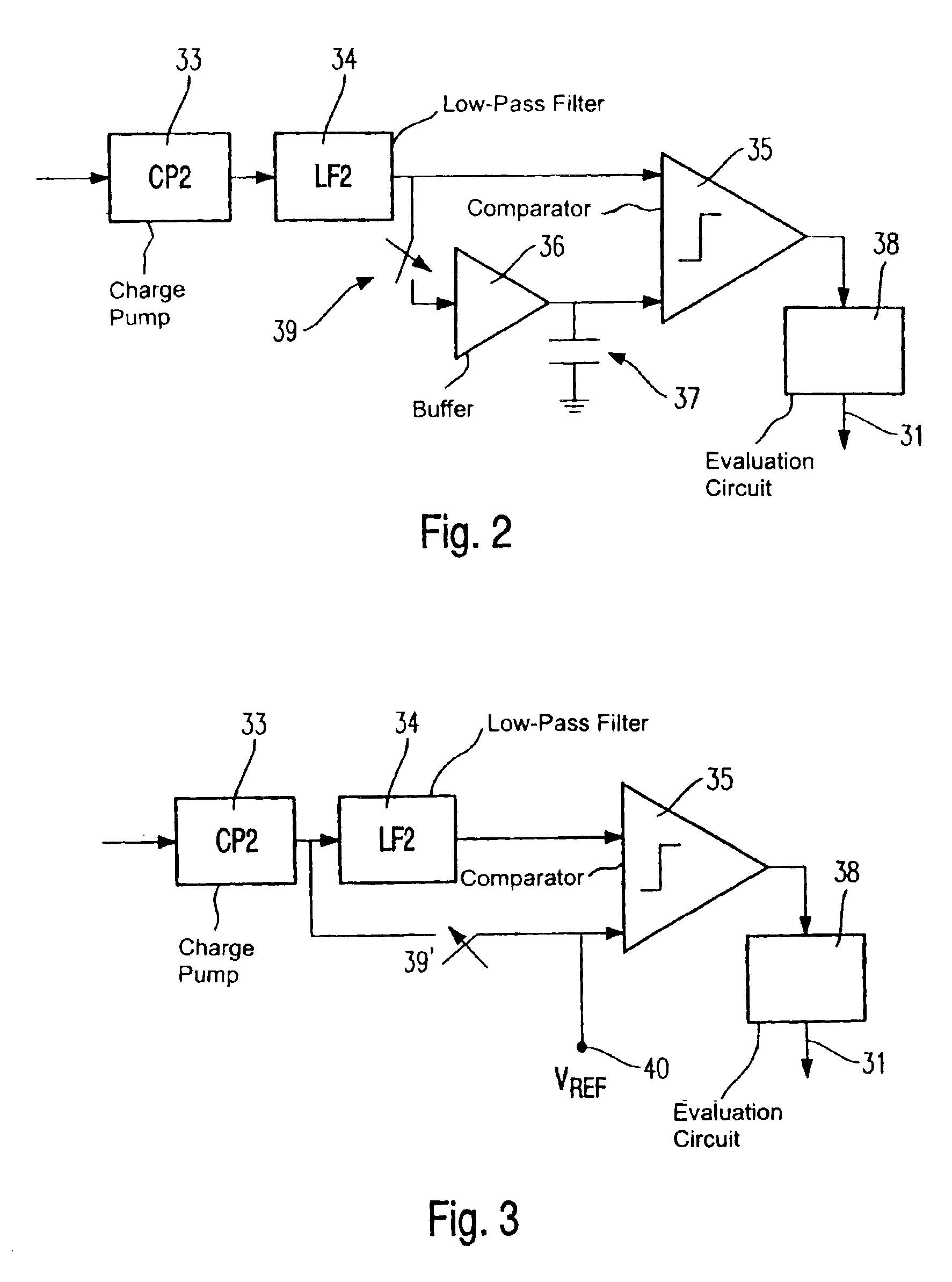Trimming method and trimming device for a PLL circuit for two-point modulation
a trimming device and pll circuit technology, applied in the direction of modulation, pulse automatic control, transmission, etc., can solve problems such as pll control errors, and achieve the effect of keeping circuit complexity down and high level of practicability of inventive trimming methods
- Summary
- Abstract
- Description
- Claims
- Application Information
AI Technical Summary
Benefits of technology
Problems solved by technology
Method used
Image
Examples
Embodiment Construction
[0030]Referring now to the figures of the drawing in detail and first, particularly, to FIG. 1 thereof, there is shown a PLL circuit 10 which operates on the basis of the principle of two-point modulation and is coupled to a trimming unit 30.
[0031]In line with an ordinary design, the signal path of the PLL circuit 10 has a phase detector PFD (Phase Frequency Detector) 12, a charge pump CP 24, a loop filter LF 14, a summation point 15 and a voltage-controlled oscillator VCO 16.
[0032]The VCO 16 is the element that produces oscillations in the PLL circuit 10 and delivers a signal of frequency FOUT as the output signal from the PLL circuit 10.
[0033]The PLL control loop 10 is closed by a feedback path that returns the output signal from the VCO 16 to the frequency detector 12 via a programmable frequency divider DIV 18.
[0034]The action of the PLL circuit as a frequency synthesizer for two-point modulation is known. Two-point modulation involves impressing a digital and an analog modulati...
PUM
 Login to View More
Login to View More Abstract
Description
Claims
Application Information
 Login to View More
Login to View More - R&D
- Intellectual Property
- Life Sciences
- Materials
- Tech Scout
- Unparalleled Data Quality
- Higher Quality Content
- 60% Fewer Hallucinations
Browse by: Latest US Patents, China's latest patents, Technical Efficacy Thesaurus, Application Domain, Technology Topic, Popular Technical Reports.
© 2025 PatSnap. All rights reserved.Legal|Privacy policy|Modern Slavery Act Transparency Statement|Sitemap|About US| Contact US: help@patsnap.com



